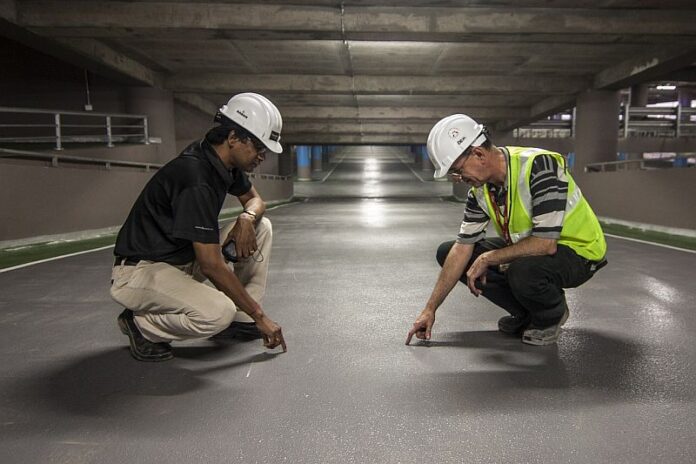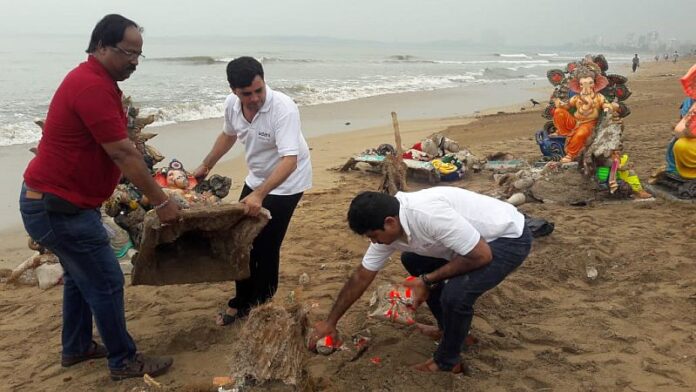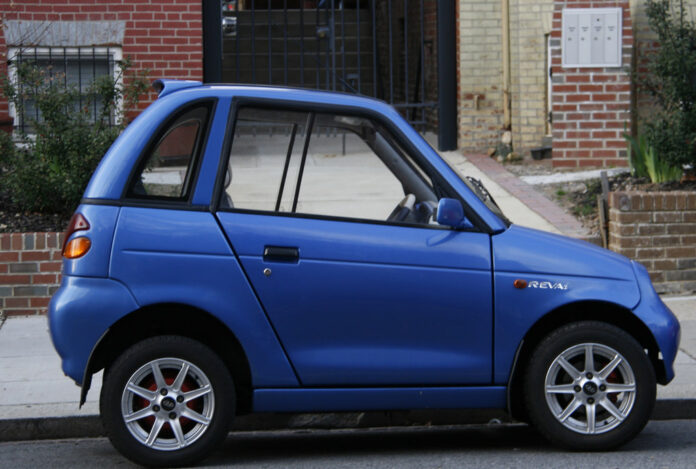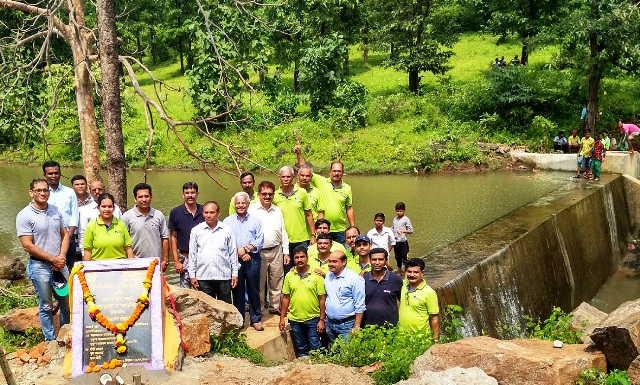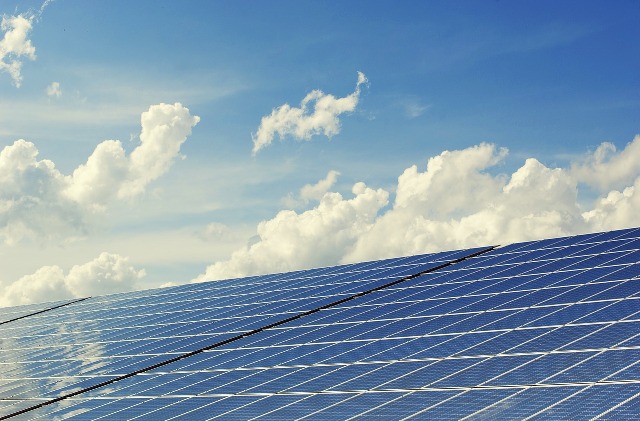Empowering Entrepreneurship Through Co-Creation
India is a country of opposites. However, the paradox in entrepreneurship is rather inconspicuous. What is alarming is however is that while Indians are inherently entrepreneurial, they find it very difficult to set up and run businesses with ease. Access to technical knowledge, finance, market and poor entrepreneurship capacities inhibit enterprise development.
Only 22% of aspiring entrepreneurs have access to training in India. Finance is a big barrier. Only 5% of enterprises have formal access to credit. The need of the hour is to co-create solutions with the community and to empower entrepreneurs with tools to master their own destinies.
One needs to talk to a diverse range of stakeholders to build an ecosystem that creates innovative trigger points in order to unleash entrepreneurship. Transformation towards a truly sustainable society is driven through business models with distributed epicentres of value creation. Technology-enabled, networked enterprises that rely on recyclable materials, renewable sources of energy, and re-skilled human resources.
On its part, the government has been pumping resources into skill development and entrepreneurship. However, the initiatives are restricted in their outreach and effectiveness due to lack of innovation and inter-connectedness between stakeholders. For example, enterprise development projects among women are replete with the same options of candle making, food processing and tailoring.
Development challenges
There are several development challenges such as scarcity of resources, lack of access to basic needs and environmental degradation. Green and inclusive enterprise packages can address these challenges. They also create decent jobs at scale. What one needs to offer are innovative mechanisms and processes which unearth a new range of enterprise packages.
Scaling up
The questions that need to be asked next is, how can we scale these innovative models further up? Also, how will they find support in straight-jacketed schemes? Answering these questions can lead us to innovative solutions which allow for better policy-building.
The future of the nation lies in entrepreneurship and enabling people to sculpt their own future.
AEML activates cleanliness drive at Juhu beach post Ganpati Immersion
For the ongoing campaign for ‘Swachhata Abhiyan’, Adani Electricity Mumbai Limited (AEML) activated a mega clean-up drive at the Juhu beach post Ganpati Immersion. Almost 100 AEML employees collected the waste that got washed back by the water, after the Ganpati immersions. This was done in a bid to make the beaches litter free.
Swachhta hi Seva
Earlier this month, AEML employees took a pledge to support the national movement ‘Swachhta hi Seva’. They continue to support the two-week long cleanliness drive around their office premises located at various locations. Close to 2,500 employees are working in groups for eradicating the waste on the roads and around their office premises.
An AEML spokesperson said, “The joy and enthusiasm is enormous among the devotees. The damage caused to the environment post the immersion of idols is a concern. The Group takes pride in supporting the national agenda. We continue to extend our support towards a sustainable environment.”
Apollo Hospitals launches Heart Challenge to motivate the nation to walk to a Healthy Heart
Apollo Hospitals announced the Apollo Heart Challenge on the occasion of World Heart Day today. By downloading the AskApollo app anyone can participate in the challenge of completing 10,000 steps per day. The Apollo Heart Challenge is part of the Apollo Healthy Heart Program. It is a personalized Cardiac Health Management Program that helps to prevent the onset of heart disease and empowers individuals to better manage their heart condition.
Walk to heart health
World Heart Day is observed every year on September 29. It creates awareness of heart disease and encourages people to become more conscious of their heart health. This year, World Heart Day calls for looking after one’s hearts and the hearts of loved ones. This has inspired Apollo Hospitals to launch the Apollo Heart Challenge. It is a call to walk to good heart health with at least 10,000 steps per day for a month. The Apollo Heart Challenge will run from September 29, 2018, to October 28, 2018.
Bigger stroke volume
Dr. Prathap C. Reddy, Chairman, Apollo Hospitals said, “We can improve the heart health with a few easy steps such as changes in diet, regular exercises and frequent health checks to monitor progress.” Dr. K Hariprasad, President, Apollo Hospitals Division added, “A person who walks 10,000 steps a day will have a bigger stroke volume. It refers to the amount of blood the heart pumps per beat, as compared with someone who walks just 1,000 steps a day. A larger stroke volume is a sign of greater aerobic capacity. The app contains information about the challenge as well as supportive material on cardiovascular disease, with health advisories and daily tips and tricks to manage heart health.”
Participating in the Apollo Heart Challenge beginning World Heart Day will help you gain increased heart function over a period.
Education In India Needs Attention
India of the ancient times was labelled the Golden Bird. We had gathered immense wealth not limited to monetary gains since our real wealth lay in the gamut of practical, spiritual and philosophical knowledge. From the time of Nalanda University in the 5th Century C.E., India attracted scholars, students and thinkers from around the world for education to its Centres of Learning, Gurukulas, Viharas or Madarsas, to study, share ideas and debate on myriad topics.
British hangover
Since the establishment of the first college by the British in 1818, there was a shift from indigenous education towards a different brand of education. Schools were focused on the elite and churned out individuals to staff the rigid bureaucratic administration.
With the onset of the 21st Century, our glorious history of education is gone. The Indian education system has been unable to evolve with time. We have become one of the world’s largest ‘importers’ of education. Majority of the youth migrating to the US, Europe, Australia and the UK in pursuit of higher education.
Changing scenario
Recent technological advancement has made many jobs redundant and created new jobs. These structural shifts in employment in the Indian economy demand qualified individuals who are innovative and globally. Without the right training and research, India will not be able to reap the benefits of these economical and global shifts. Even with its large workforce and increasing pool of the ‘demographic divided’.
Poor schooling
Primary schooling serves other purposes than teaching reading and math. The indicators on these two basic skills are not encouraging. An encouraging sign is that enrolment rates in primary schools are over 90%. However, a meagre fraction of these students move up to higher classes. High schools face many of the same quality problems as the primary schools. With enrolment so low, quality does not even come into the picture.
CSR could be the answer to the gap in education. Companies like Piramal, Samsung, Dell and Ford India are working with the government in various States to bring Indian education back to its glory days.
Samsung India Builds New Campus at Government School in Karnataka’s Kolar District
Samsung India has inaugurated a new campus with six new classrooms at the Kembodi Government School in Karnataka’s Kolar district. This will help the school scale up to accommodate up to 300 students, up from 156 students earlier. So far, students from three different classes were forced to sit in the same classroom for want of space.
A Memorandum of Understanding was signed between Samsung R&D Institute, Bangalore (SRI-B) and the Department of Education, Government of Karnataka for the construction of the new campus at the school in February 2018. The new campus has six classrooms and a new administrative block with the necessary school furniture. This building also has a power backup, rain water harvesting facility and a RO+UV water filter for students. The school, which was established in 1931, will now offer curriculum in both Kannada and English medium from Class I to Class VIII.
The new campus at the Kembodi Government Primary School in Karnataka’s Kolar district was inaugurated by N Mahesh, Minister for Primary and Secondary Education, Government of Karnataka, Manjunath, District Collector, Kolar District, Dipesh Shah, Managing Director, SRI-B and Harry Heejoon Kang, Chief Financial Officer, SRI-B along with other dignitaries.
Earlier this year, employees of Samsung Research & Development Institute – Bangalore (SRI-B) visited 1,200 government schools across Karnataka over three days to donate notebooks and pens to 70,000 students.
CSR: Eco Friendly Cars In India
According to a study, transportation accounts for about 24 per cent of India’s carbon emissions. It is a major source of air pollution in several cities across the country. As per a recent WHO report, 14 of the top 20 most polluted cities in the world are in India. It is crucial to take drastic measures to reduce these emissions and control the pollution. According to a recent online survey conducted among 2178 Indian drivers, 87% of the people are motivated to opt for hybrid or electric vehicles in order to reduce pollution. Car insurers have also been known to give insurance discounts to drivers of eco-friendly vehicles.
These are some of the most eco-friendly cars available in India.
1. Maruti Suzuki Eco Charge
The Eco Charge by Maruti Suzuki is a concept hybrid that uses an 1196 cc petrol engine combined with a 5KW electric motor. This results in better mileage and fewer emissions. It charges fully in 7 hours and can achieve a top speed of 100 kmph.
2. Mahindra e2o Plus
Mahindra and Mahindra launched an improved version of the Reva, known as the e2o, in 2013. It then recently launched a four-door version of the compact electric vehicle, the e2o Plus. It is the most practical iteration of the electric hatchback and it comes with a range of 140 km.
3. Toyota Prius Z4
Toyota Prius is a car designed to produce low emissions and high fuel efficiency. The car has an intelligent hybrid system that uses a 1.8-litre petrol engine as well as an electric motor.
4. Toyota Camry Hybrid
Toyota Camry is a more practical hybrid car by Toyota and has a better resale value. Being the most affordable hybrid (not mild-hybrid) car is one of the reasons to pick it.
5. Chevrolet Beat Electric
Beat is one of the bestsellers for Chevrolet and has enabled the company to capture a huge market share. As per the reports, an electric version of the car will be launched soon.
6. Hyundai i10 Electric
Hyundai i10 Electric was showcased at the Auto Expo in New Delhi last year. It is an electric version of one of the bestsellers of Hyundai. The car will have 16 kWh Li-ion rechargeable battery and a 65 BHP electric motor. On full charge, it should be able to run for 150 km.
7. Tata Nano Electric
Tata has already showcased the green version of world’s cheapest car at the Geneva auto show. The electric drive train will give the Nano a battery life of 160 km.
8. Reva NXG
Reva was the first all-electric Indian car. It has launched another version called as Reva NXG which has modern exteriors and a good eco-friendly electrical motor inside.
The government of India, in order to reduce the dependence on fossil fuels and protect the environment is also promoting usage of more electric vehicles. The government has decided to exempt electric vehicles and automobiles run on alternative fuel from permit requirements. The government is also promoting eco-friendly vehicles through Faster Adoption and Manufacturing of (Hybrid &) Electric Vehicles (FAME) India scheme, which was launched in 2015 and its second phase was launched in 2018.
Thank you for reading the story until the very end. We appreciate the time you have given us. In addition, your thoughts and inputs will genuinely make a difference to us. Please do drop in a line and help us do better.
Regards,
The CSR Journal Team
Subscribe
Galaxy builds check dam for Palghar villagers
Villages of Kharonda in the district of Palghar, Maharashtra, receive surplus rainfall. However, it is water deficit for over 8-9 months of the year. This is due to the lack of water storage facilities in the village. As a result, villagers were forced to migrate during these months. The problems of the villagers of Kharonda came to the attention of the team at Galaxy Surfactants Limited. It was decided that constructing a check dam would mitigate the problems of these villages.
The team set out to work with the locals, and the land for this was generously donated by two farmers, Babji Sonya Ravate and Nandu Navsha Nadage. Plans were drawn and the company engineers participated fully in the construction of 2 check dams.
Project 1 was the construction of a check dam at Navlyachapada, which helped in storing 20 lakh litres of water. Gaining from this experience, the Team at Galaxy set out to work for Project 2 at Kharonda Village. The construction of the second dam was completed successfully in record time with a capacity of 1.15 crore litres. This project was 5 times bigger in scale. It will help transform the lives of over 530 families and 2500 people, who can now live & earn their livelihood without having to migrate. U Shekhar, the company’s managing director, said, “We use water to make high quality surfactants, but no one can make water. Everyone can save water, and we help to save water.”
Galaxy Surfactants Ltd. has achieved significant progress on its Sustainability Goals 2020. It has succeeded in exceeding its goal of tree plantations (over 42,000 trees). Life Cycle Assessment studies have been completed for select major products to estimate environmental impacts over the product life cycle. Galaxy is working towards incorporating sustainability across its supply chain by assessing its suppliers on their environment and social performance. Its manufacturing sites in India and Egypt are RSPO certified, which reflects commitment to a sustainable palm oil supply chain.
Under their CSR Project VATAVARAN SURAKSHA, Galaxy has undertaken various water harvesting and restoration initiatives for the benefit of the community at large. They have been working towards reducing their water footprint through projects involving innovative practices like recharging of bore wells, construction of KFP structures and restoration of lakes.
Wienerberger India moves to Wind and Solar Energy
Wienerberger India’s robotic plant produces over 70,000 large format hollow blocks every day for the construction industry. It has moved to sustainable electricity sources including wind and solar energy.
Initially, Wienerberger India’s factory in Kunigal, 70 Kms from Bangalore, was dependent solely on conventional energy sources for electricity. This meant operating heavy duty robotics and other machinery capable of manufacturing nearly 480 tons of clay blocks per day, 365 days a year, with minimum manual intervention. To reduce dependence on the usual electricity sources, Wienerberger India was on the lookout for alternative and renewable energy sources that would further its efforts for creating a sustainable roadmap in large-scale manufacturing. Since 2017, the factory was successful in sourcing over 90% of its electricity requirement from solar and wind farms.
With 200 years of experience and specialization in producing clay based building material (Wall | Facades | Roofs), the company pioneered imbibing green technology in its production. There is conscious implementation of processes that not only recycle used energy but also reduce dependence on conventional sources of electricity.
“We are committed towards the principles of green building and sustainability. We hope our conscious endeavor to adopt wind and solar energy for manufacturing large quantities of clay hollow blocks, would further the cause of adopting green manufacturing concepts in India,” said Monnanda Appaiah, Managing Director, Wienerberger India.



